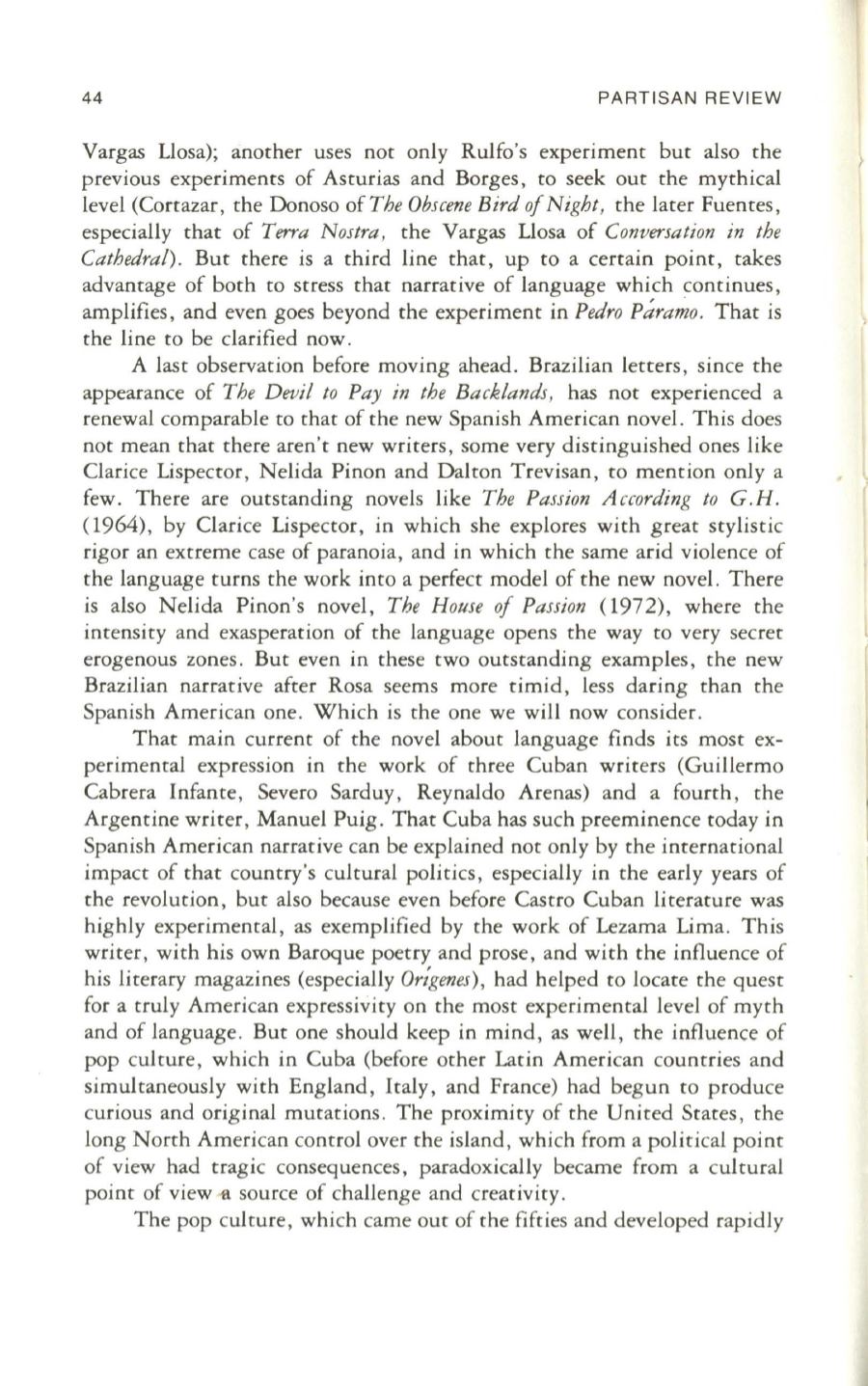
44
PARTISAN REVIEW
Vargas Llosa); another uses not only Rulfo's experiment but also the
previous experiments of Asturias and Borges, to seek out the mythical
level (Cortazar, the Donoso of
The Obscene Bird o/Night,
the later Fuentes,
especially that of
Terra Nostra ,
the Vargas Llosa of
Conversation in the
Cathedral).
But there is a third line that, up to a certain point, takes
advantage of both to stress that narrative of language which continues,
amplifies, and even goes beyond the experiment in
Pedro
P:Zra~o.
That is
the line to be clarified now.
A last observation before moving ahead. Brazilian letters, since the
appearance of
The Devil to Pay in the Backlands,
has not experienced a
renewal comparable to that of the new Spanish American novel. This does
not mean that there aren't new writers, some very distinguished ones like
Clarice Lispector, Nelida Pinon and Dalton Trevisan, to mention only a
few. There are outstanding novels like
The Passion According to C.H.
(964), by Clarice Lispector, in which she explores with great stylistic
rigor an extreme case of paranoia, and in which the same arid violence of
the language turns the work into a perfect model of the new novel. There
is also Nelida Pinon's novel,
The House
0/
Passion
(1972), where the
intensity and exasperation of the language opens the way to very secret
erogenous zones. But even in these two outstanding examples, the new
Brazilian narrative after Rosa seems more timid, less daring than the
Spanish American one. Which is the one we will now consider.
That main current of the novel about language finds its most ex–
perimental expression in the work of three Cuban writers (Guillermo
Cabrera Infante, Severo Sarduy, Reynaldo Arenas) and a fourth, the
Argentine writer, Manuel Puig . That Cuba has such preeminence today in
Spanish American narrative can be explained not only by the international
impact of that country's cultural politics, especially in the early years of
the revolution, but also because even before Castro Cuban literature was
highly experimental, as exemplified by the work of Lezama Lima. This
writer, with his own Baroque poetry and prose, and with the influence of
his literary magazines (especially
Origenes),
had helped to locate the quest
for a ttuly American expressivity on the most experimental level of myth
and of language . But one should keep in mind, as well, the influence of
pop culture , which in Cuba (before other Latin American countries and
simultaneously with England, Italy, and France) had begun to produce
curious and original mutations . The proximity of the United States, the
long North American control over the island, which from a political point
of view had tragic consequences, paradoxically became from a cultural
point of view
ii
source of challenge and creativity.
The pop culture, which came out of the fifties and developed rapidly


